Popular Winter Activities in China
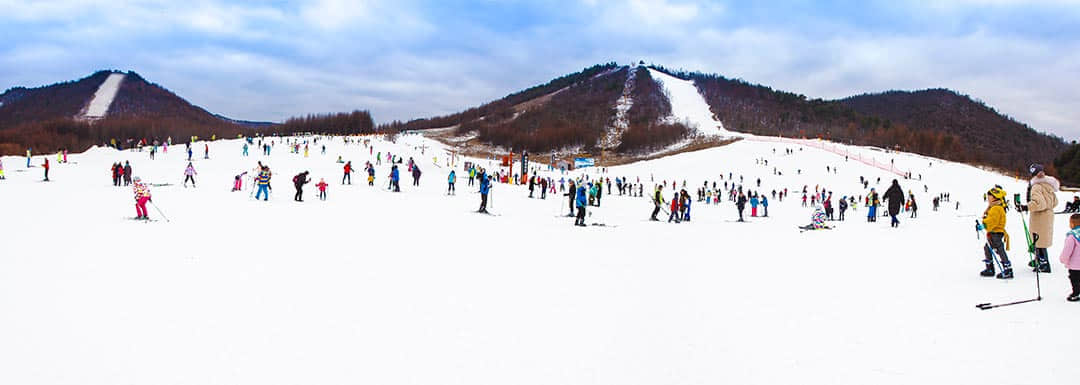
Geography makes a big difference: As with any large country, not every part will experience winter. In China, drawing a line mostly through the middle going east-west will fairly accurately show which places experience a real winter (with freezing temperatures) as opposed to which ones only get really chilly. The absolute coldest part of the country with the longest and harshest winters is the Northeast. This region, which includes Beijing, runs from around the capital all the way to the Russian and North Korean border. The most well-known province for winter is called Heilongjiang and its capital, Harbin, is the Ice Queen of the country. Anyone wishing to see the best of winter in China should head directly to Harbin and the surrounding areas.
Other places that are cold, have long winters, but are not necessarily famous for “winter” are the mountainous regions of Tibet and Xinjiang. While the Himalayans here regularly reach 7,000-8,000 meters (21,000-24,000 feet), are snow capped year-round, and thus have almost a year-round winter, they are simply not considered to be a winter destination (mostly because there is very little winter recreation infrastructure built in these areas).
First of all, let’s touch on what Chinese mostly don’t do in the winter.
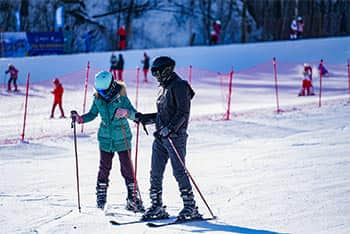
Harbin Yabuli Ski Resort
Unlike in Europe, the US, or Canada, fast downhill types of activities are not very popular yet in China. Skiing and snowboarding are just becoming a little more common amongst the wealthy crowd, so while China has some of the highest mountains in the world (and arguably would be some of the best for skiing), don’t expect to find ski resorts dotting the horizon in Tibet or Xinjiang (the two provinces with the tallest snow-capped mountains). However, there are a number of ski resorts in the northeastern part of the country (from Beijing to Harbin). Some online sites claim there are around 180 ski resorts in the country, but this number includes a massive number of indoor ski arenas. For outdoor ski resorts, the best current estimation is around 20.
Furthermore, don’t expect to find a lit of motorized winter activities. Snow mobiles and motorized snow bikes are also not very popular currently and only but the wealthiest of families who live in the snowier region around Harbin would own one.
Finally, big air activities are similarly not popular yet – so if ski jumping, snow board jumping, or running a half pipe is your thing, then you won’t find it too popular now in China, although the larger ski resorts will have some of the infrastructure for these activities.
So, if fast and steep is not the big thing in China, then what is? Well, it’s mostly about slow and flat, and being with your family around lots of other people.
10 Popular and Unique Winter Activities in China
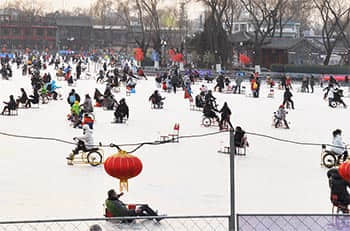
Winter fun at Shichahai Park in Beijing
1. Stay warm and stay inside
Like the majority of people across the world, when the temperature starts to plummet, most of us head indoors to stay warm. And unless you live someplace where winter lasts for more than 6 months, winter sports and activities are not something most people participate in. The same goes for China.
For most Chinese, winter means heavy coats and staying indoors someplace warm. Shorter days and longer nights also contribute to more inactivity during wintertime. However, some people love to get out in the cold and enjoy the unique types of activities that only come with either snow or ice on the ground.
2. Chair Ice-Sleds
On a frozen lake, people will get on ice sleds that have a chair attached to it and use pole (similar to a ski pole) to push themselves around. The designs and versions of this sled are plentiful. There are single sleds up to multi-person sleds holding up to 6 people. The most common is a two-person sled which can linked with other sleds to form longer chains. Styles and colors also differ. Some chairs will be all metal (probably not the most comfortable for your bottom when it’s -10 outside), some have plastic seats with metal supports, and newer ones are all plastic and come shaped as animals or other fun designs.
Sled-type activities are quite popular in China. There are also simple metal sleighs which can hold 2-4 people and are attached to a small animal, like a goat, to be pulled around a frozen lake.
3. Ice Skating
Still not very popular in China, but more adults are trying the sport and more kids are getting into at young ages – especially in the northeast. Frozen lakes will certainly have their share of ice skaters, but indoor ice rinks are becoming quite popular now and can be somewhat easily found all over China in many upscale shopping malls of large city.
4. One-pole Skiing
While downhill slaloms may not be all the rage yet, children in colder regions are beginning to enjoy the sport on bunny slopes. Interestingly, many children will learn how to ski using just one wooden pole instead of two light-weight poles.
5. Snow Biking
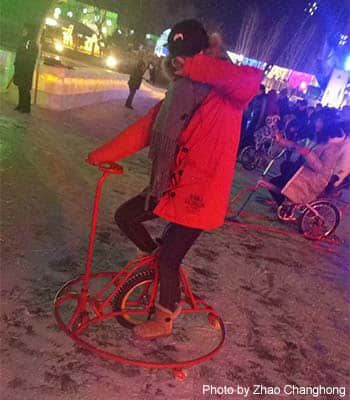
Ice sports in Harbin
Anyone expecting to come to China today and find millions of bicycles all over the cities will be sorely disappointed. This was the scene in the 1900’s, but beginning in the 2000’s, bicycles got traded in for mopeds and cars. Yet, this everlasting method of transportation is still used by some people to get to work, but mostly as recreation. And when using it for fun, what could be more fun than replacing the front tire with a short ski, adding some extra wide grip to the back tire, and making a snow bike! This unique winter fun machine can easily be found on frozen lakes and snowy areas. Most people use them on flat surfaces and go fairly slow, but there’s no limit to the fun someone could have by taking one of these bikes downhill.
6. Building your own fun – Snowmen and Ice Slides
Building people out of snow (ie, snowmen) or building things to have fun with is a time-tested way to fun in winter across the globe. Find any snowy park on the weekend in China, and chances are pretty good that some kids have built themselves a bunch of snowmen or even a nice ice slide.
7. Tubing/Plastic sleds
Getting inside an extra large inner-tube and coasting down a hill provides endless hours of fun. This is popular in China as well. In some cases, the tubes go downhill, but mostly, children (or some adults) sit in the tube on a frozen lake and are pulled by someone else (or sometimes pulled by a dog or another animal). Modern plastic sleds are a common substitute for the tubes and are used in the same way.
8. Spinning Top
One of the more “unique to China” activities that you can see during winter is when people (mostly older men) take their metal tops down to a frozen lake and play a game called “Da Tuoluo” – which in English roughly means “whip the spinning top”. A person will hold a whip (yes, like a horse whip) and strike their metal top at just the right angle to send it spinning. As it slows, they’ll whip it again to keep it going. The more, and harder, you whip the top, the faster it will spin.
9. Soaking in Thermal Baths
I never understood the allure of soaking in 120o f water (50c) during summer, but people all over the world head to thermal springs during their summer vacation. To me, the best time to sit in water that hot is in the dead of winter, possibly surrounded by snow. This is exactly what you can do in multiple places around China. This activity has been popularized the West by the Japanese, but people in China do the same. For many, this is THE way to relax in winter.
10. Ice Sculpting
Perhaps we’ve saved the best for last. For any winter lovers, admirers, and enjoyers out there, China has one city that has very deservingly claimed the title of “China’s Capital of Winter” – Harbin. Every year, Harbin – which sits in one of the coldest areas of the country and regularly can get down to -30c – holds an annual ice sculpting festival and contest. The numerous ice sculptures there can easily be some of the very best ice art in the world. As a whole, the festival is jaw-dropping. The individual sculptures are breath-taking and stupefying. Some are so intricately carved that they look almost real. Others are enormous – 20 meters (60 feet) high and 100 meters (100 yards) wide. Famous Chinese sites like the Great Wall, the Forbidden Palace, and Terracotta Warriors are recreated … often to scale! I don’t think it’s an overstatement to say Harbin’s Ice festival is one of the best, most-worthwhile visits to the entire country and as a festival that’s unique to winter, it’s no stretch to say this should be the number one stop for any visitor during January and February. The festival runs from Christmas Eve to near the end of February.
Southern China - Snow … on a rice terrace?
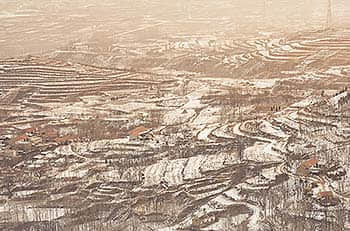
To briefly touch on what winter is like is the half of the country that doesn’t actually experience winter, it’s best described by this author as “all the discomfort with none of the fun”. Temperatures south of the middle line (mentioned at the beginning of this article) fall only to about 40f (5-10c) for most of the winter. The southern cities of Guangzhou and Hong Kong almost never fall below freezing. Shanghai rarely falls below freezing. For this reason, most people don’t have heat in their homes. The government actually provides free heat for most of the population living in the northern, more wintry, part of the country, but the rest has to suffer through uncomfortably cold temperatures without any type of heating system. Fireplaces, gas heaters, electric heaters, central heat are all exceedingly uncommon. Schools and other public buildings suffer the same. So, for the 8-10 weeks of cold(er) weather, people break out their extra warm coats, throw an extra couple of blankets on the bed, and drink plenty of warm liquid (mostly tea). Life can be uncomfortable without any of the fun that comes with snowfall, but at least the chilly temps don’t last very long.
In the extreme south of the country, where the rice fields are abundant, snow would not normally be expected here – and it’s not. It rarely snows on the rice fields in super-southern Yunnan. However, the famous Dragon Bone rice terraces (aka, Longji and Longsheng) outside of Guilin (4 hours by train, 6 hours by car/bus northwest of Guangzhou) have had snow before and it’s not necessarily an infrequent event. Snow? On a rice terrace? Yep, and the phrase “breathtaking” doesn’t quite do it justice. For anyone wishing to experience this seeming conundrum, check local forecasts well before visiting, keep your plans as flexible as possible, get a phone number or email address for a local hotel to check current, up-to-date conditions (there are plenty of hotels and some owners there can speak, or write, basic English) and hope the skies open during your visit. Oh, and for those wondering, most of the hotels here (even the very basic, wooden ones) do in fact have heat – fireplaces and woodstoves!

OR
Are you eager to begin your Chinese cultural journey?
Drop us a line and we will promptly connect you with our leading China expert!
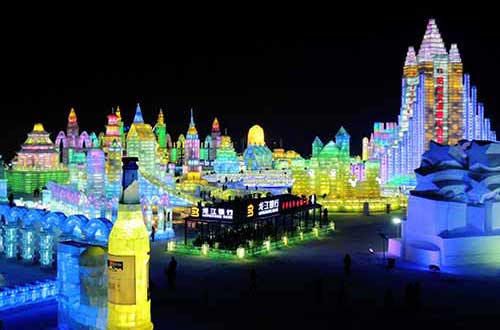 Harbin International Ice and Snow Festival
Harbin International Ice and Snow Festival 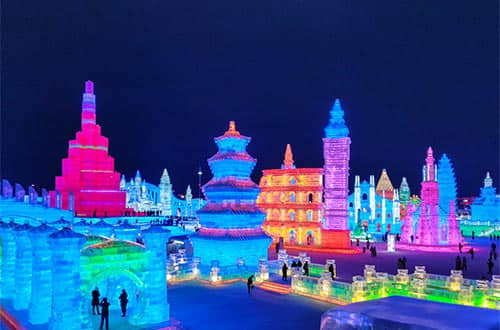 Harbin Ice and Snow Festival Tour
Harbin Ice and Snow Festival Tour 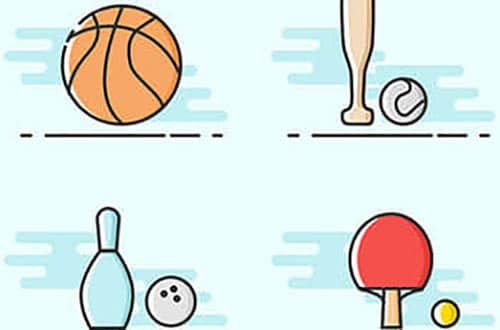 Popular Sports in China
Popular Sports in China 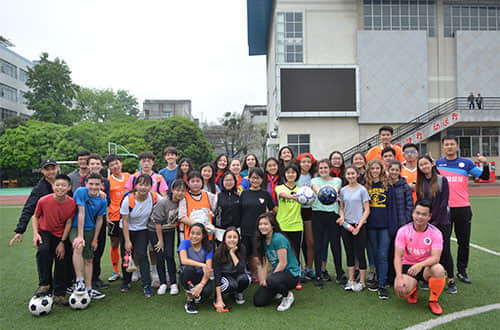 China Sports Tour
China Sports Tour